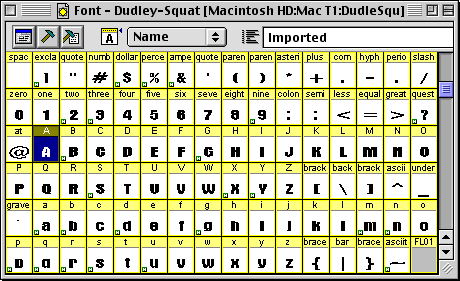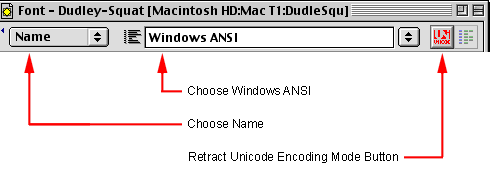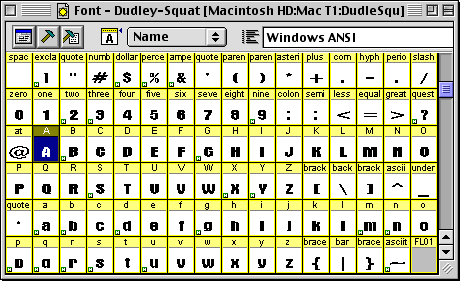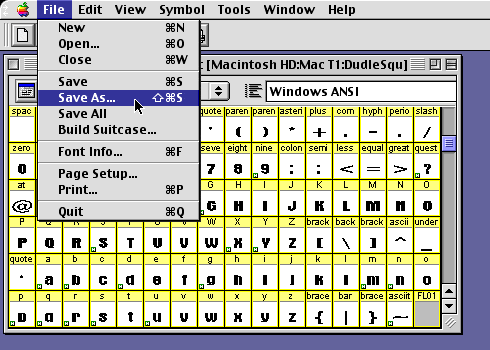|
|
Porting
Fonts Across Platforms:
Number 20C |
 |
|
|
|
|
|
|
Porting Mac® Type 1 Fonts To
The PC With Mac FontLab®
To find out more about FontLab and where to get
it, click
here
Click here
for legal note on fictitious font name used in this
tutorial
10. Now we can handle the encoding. The
default encoding for imported fonts is "Imported".
We need to change this.

11. Select the encoding options from the
toolbar on the font window. In FontLab there are two
encoding modes - Names encoding mode and Unicode encoding
mode. We want to put FontLab into Names encoding mode
because the converted font will be PostScript®
Type 1. The Unicode encoding mode button must be retracted
to be in names encoding mode (shown below). We also
want to select Windows ANSI encoding from the drop-down
list of available encoding tables. Perform the following
steps shown in the diagram below. For a more complete
explanation of encoding and why it is important, click
here.

12. In FontLab, you can generate fonts
using the encoding that is displayed in the font window.
FontLab is now ready to create the actual PC Type 1
font.

13. Click File > Save As....

Click Here To Continue...
|